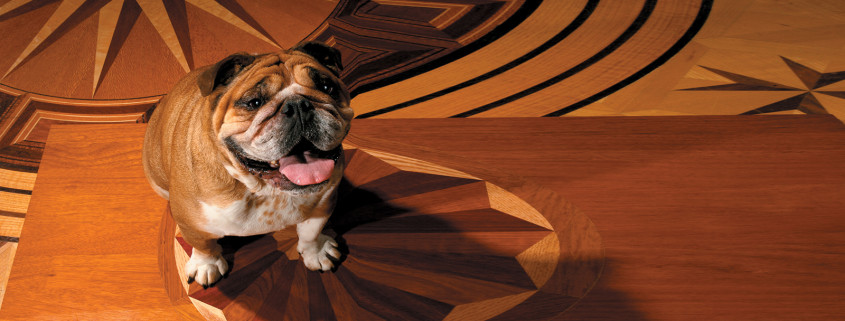How to select the right color for your new or refinished hardwood floors
/in Uncategorized /by Mitch NydishSelecting the right color for your new or refinished hardwood floors can dramatically influence the overall look and feel of your home. Here’s a guide to help you make the best choice:
1. Consider the Room Size and Lighting
- Room Size:
- Small Rooms: Lighter colors like pale oak, maple, or ash can make a small room appear larger and more open.
- Large Rooms: Darker colors such as walnut, mahogany, or ebony can add warmth and coziness to larger spaces, making them feel more intimate.
- Natural Light:
- Well-Lit Rooms: If a room has plenty of natural light, you have more flexibility with darker tones, as the light will prevent the space from feeling too closed in.
- Low-Light Rooms: Opt for lighter shades to reflect more light and brighten the space. Dark floors in a dim room can make it feel smaller and more enclosed.
2. Match with Existing Décor
- Wall Colors:
- Contrast: Dark floors with light walls create a striking contrast that can make the room feel more dynamic.
- Monochromatic: Matching light floors with light walls can create a seamless, airy feel, while matching dark floors with dark walls can give a room a cozy, enveloping vibe.
- Furniture:
- Complementary Tones: Choose a floor color that complements your furniture. For instance, light wood furniture pairs well with both light and medium-toned floors, while darker furniture can create a rich contrast with lighter floors.
- Avoid Exact Matches: Floors and furniture that are the exact same color can blend together too much, so aim for a slight contrast to distinguish each element.
3. Consider the Style of Your Home
- Traditional Homes: Rich, warm tones like cherry, mahogany, or walnut work well in traditional settings, adding to the classic, timeless feel.
- Modern Homes: Cooler tones like gray, whitewashed, or ashy woods are popular in modern and contemporary designs, offering a sleek and clean aesthetic.
- Rustic or Farmhouse: Wide planks with a distressed or hand-scraped finish in medium to dark browns or even weathered grays are ideal for rustic or farmhouse styles.
4. Think About Future Trends
- Neutral Tones: If you plan to stay in your home for many years, consider timeless, neutral tones like medium brown, which are less likely to go out of style.
- Bold Choices: While bold colors like dark ebony or light whitewashed floors are trendy, consider how these choices will age. If you prefer to follow trends, be prepared for potential refinishing or changing in the future.
5. Maintenance and Durability
- Dark Floors: Dark stains can show scratches, dust, and pet hair more easily. If you have pets or a busy household, this might mean more frequent cleaning.
- Light Floors: Lighter floors tend to hide dirt and scratches better, making them a good option for high-traffic areas.
- Medium Tones: Medium brown floors are often the easiest to maintain, as they hide most imperfections while still providing warmth and depth.
6. Test Samples in Your Space
- Flooring Samples: Bring home several samples and test them in different areas of the room. Observe how they look in both natural daylight and artificial lighting.
- Live with the Samples: Place the samples on the floor and live with them for a few days. Notice how the colors interact with your walls, furniture, and overall atmosphere at different times of the day.
7. Consider the Wood Type and Grain
- Wood Species: Different wood species absorb stains differently. For example, oak shows grain patterns clearly and takes stain well, while maple has a tighter grain and may appear blotchy with darker stains.
- Grain Visibility: Decide how much of the wood grain you want to show. Lighter stains tend to highlight the natural grain, while darker stains can minimize it, focusing more on color depth.
8. Account for Staining and Refinishing
- Staining Flexibility: If you’re refinishing existing floors, some wood types take stains better than others. Make sure the wood can achieve the color you desire.
- Test Stains: Before committing, test the stain on an inconspicuous area or on a sample piece of the same wood. This helps you see how the wood reacts to the stain and how the final color will look.
9. Consult a Professional
- Designer Input: If you’re unsure about which color to choose, a professional interior designer can provide valuable advice based on your home’s style, lighting, and other factors.
- Classic Floor Designs Specialist: We can offer insights on how different stains will interact with your specific wood type and help you achieve the exact look you want.
10. Visualize the Whole Picture
- Overall Cohesion: Ensure the floor color harmonizes with the overall color scheme of your home, including adjacent rooms. Consistency or thoughtful contrast across connected spaces can enhance the flow of your home.
- Long-Term Satisfaction: Consider how happy you’ll be with the color in the long run. Trends come and go, but a color that complements your lifestyle and taste will provide long-lasting satisfaction.
By carefully considering these factors, you’ll be able to select a hardwood floor color that enhances your home’s beauty, complements your lifestyle, and stands the test of time. Visit Classic Floor Designs and let us help you select the perfect color for your new hardwood floors.


